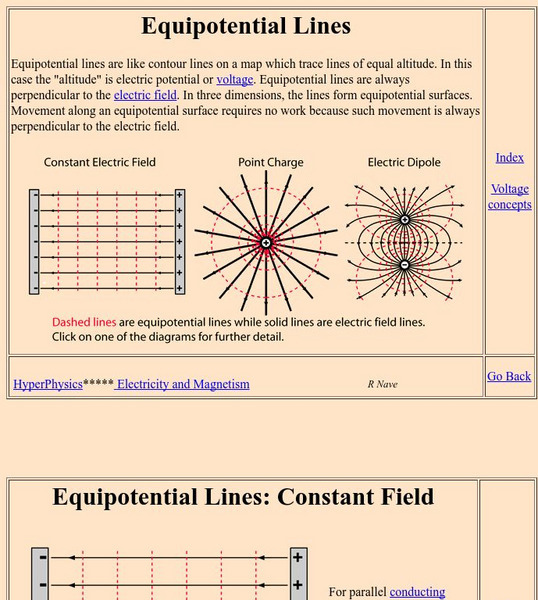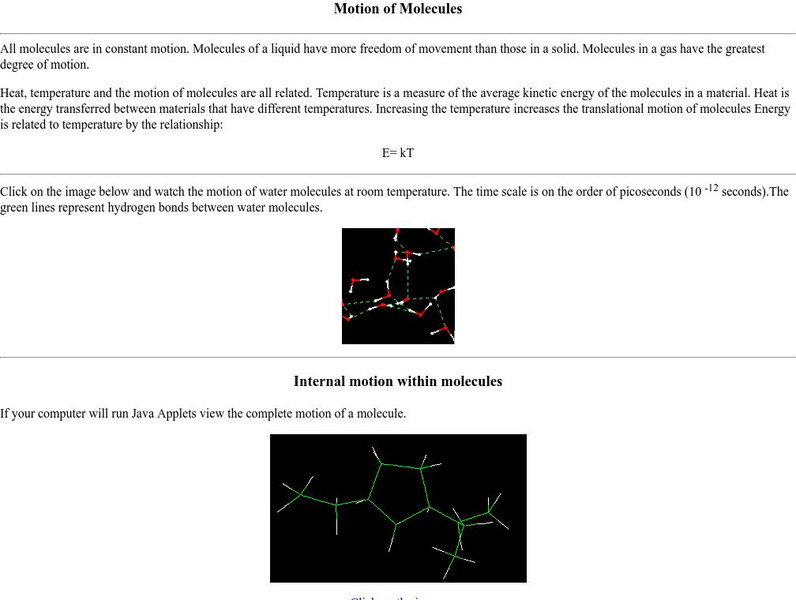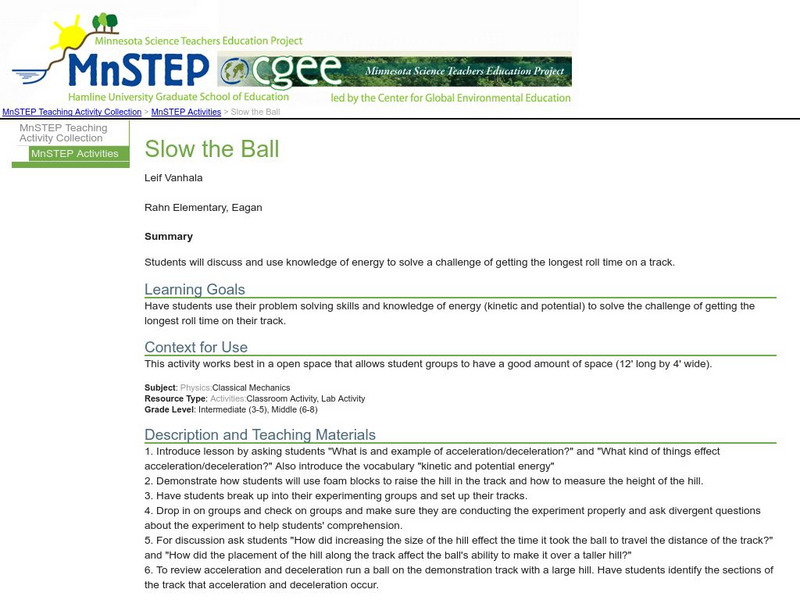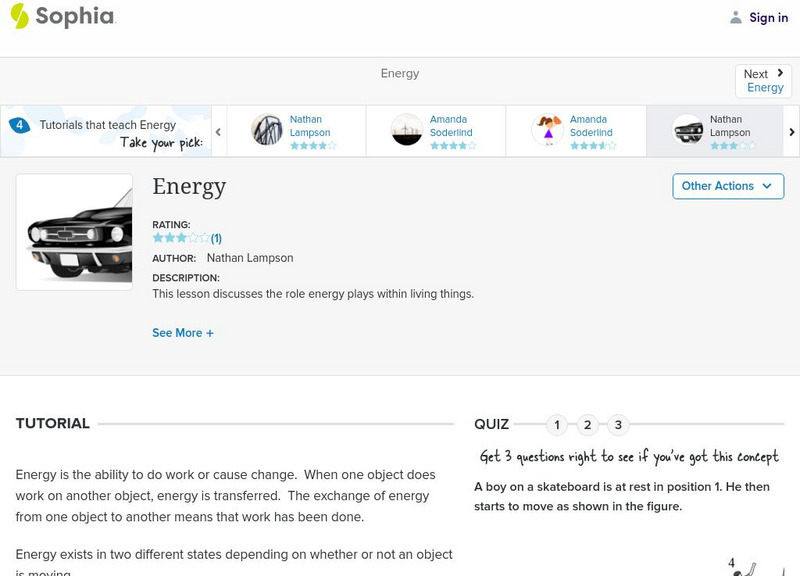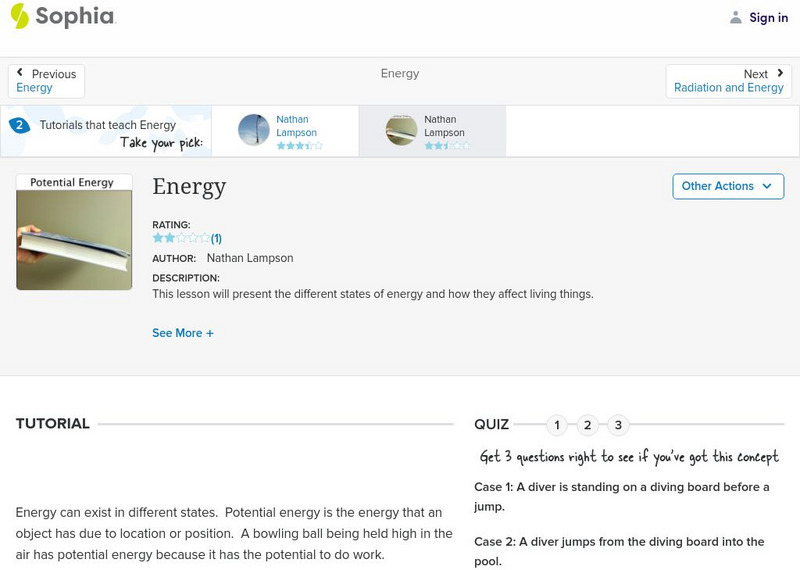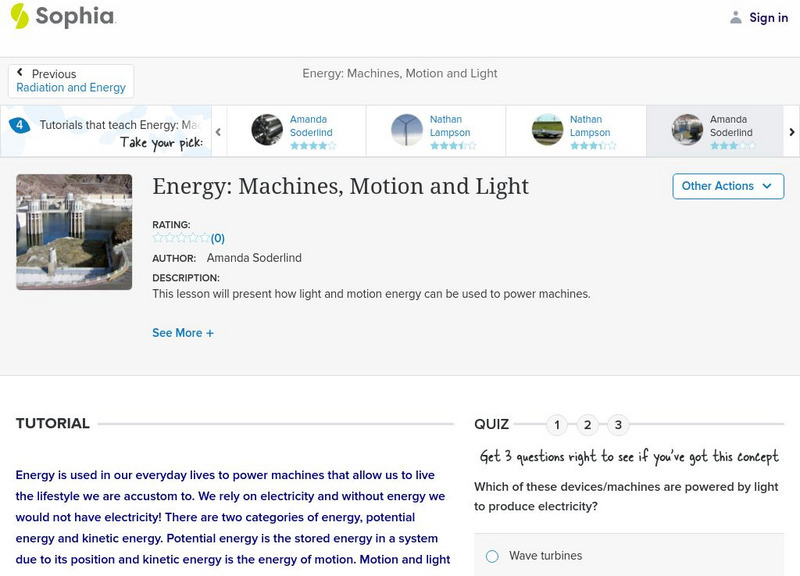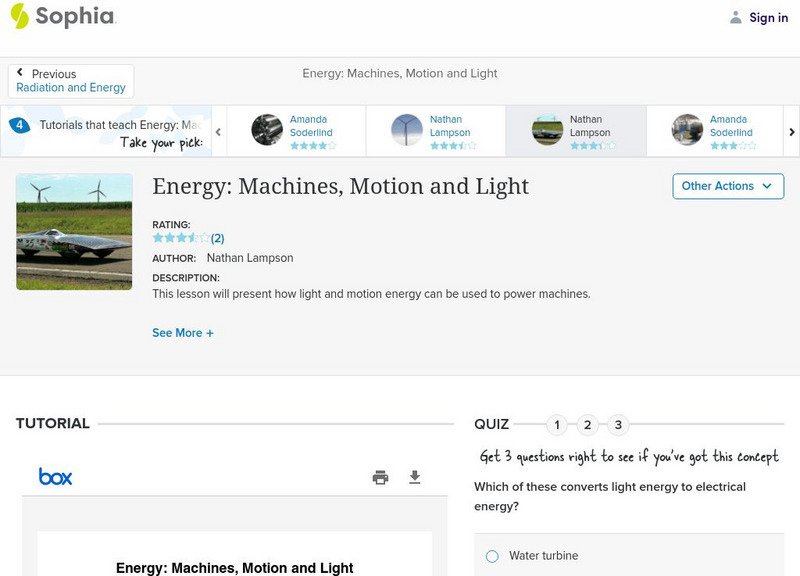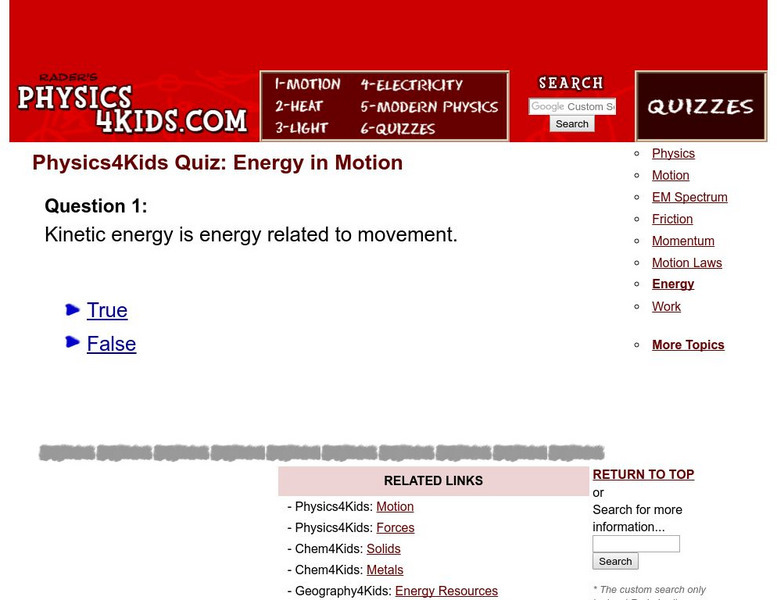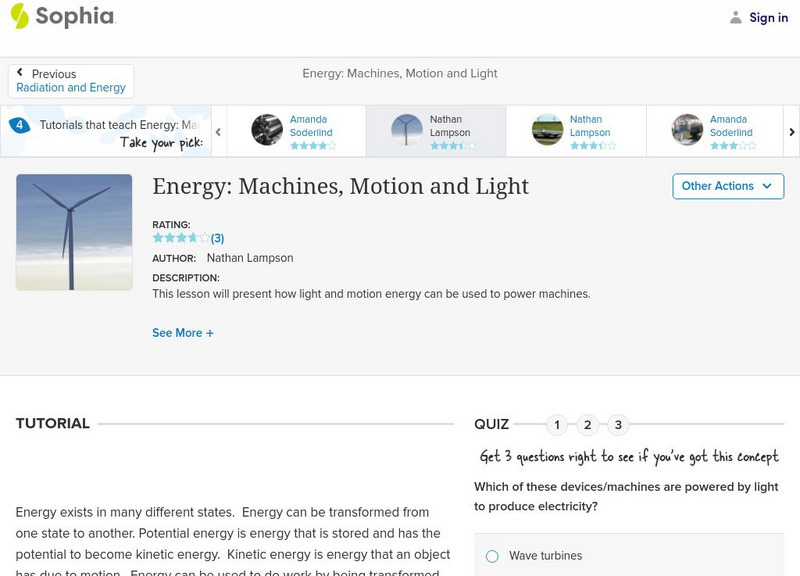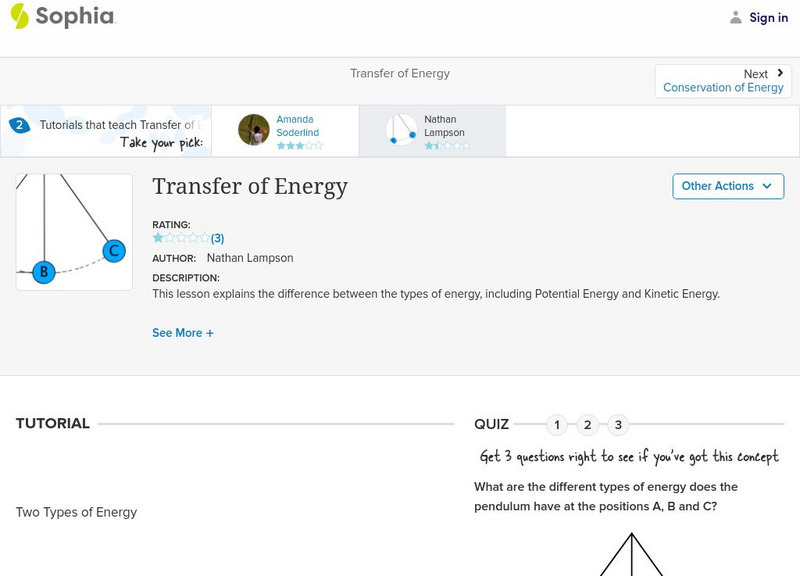Georgia State University
Georgia State University: Hyper Physics: Point Charge Potential
This site from the Georgia State University explains the concept of electric potential about a point charge or combination of severat point charges. An interactive JavaScript form allows the visitor to investigate the effect of distance...
Georgia State University
Georgia State University: Hyper Physics: Equipotential Lines
At this site from the Georgia State University, the equipotential lines around several different configuration of charges are shown and described. Excellent graphics and clear discussion.
NASA
Nasa: Kepler's Second Law
This site from NASA states Kepler's second law of planetary motion and depicts its meaning with an informative diagram. Relates the law to conservation of energy principles and discusses the eccentricity of a satellite's (or a planet's)...
NASA
Nasa: From Stargazers to Starships: Energy
Demonstrates how principles of kinetic energy, potential energy and energy conservation can be used to determine the speed of a descending object if given its initial height. Further discussion of other topics such as heat and...
MadSci Network
The Mad Scientist Network: Bouncing Rubber Ball
A question and answer format is used to relate elastic potential energy to the bounce of a rubber ball. Explanation of this simple phenomenon is thorough, complete, and free of trite statements.
Cosmo Learning
Cosmo Learning: Engineering Mechanics
A collection of video lectures from a course introducing students to engineering mechanics. Webpage includes forty lectures from a professor at the National Programme on Technology Enhanced Learning. Lectures vary in length and cover...
New York University
Nyu: Math Mol: Motion of Molecules
Examine the link between molecular motion and energy. Observe the movement of a molecule at room temperature. Learn about the different types of molecular motion.
Science Education Resource Center at Carleton College
Serc: Mn Step: Slow the Ball
For this experiment, students will design a track for a rolling ball to try to have the longest roll time possible. They will, in the process, apply their understanding of kinetic and potential energy, and acceleration and deceleration.
Physics World
Physics World: Contextual Physics in Ocean Park
After downloading the "Motion Video Analysis" software, users can collect data about moving object's position from digital movie clips. This collection of data will allow them to plot motion graphs and draw conclusions about physics in...
Other
Ed informatics.com: What Is Work, Energy and Power?
Defines work, energy, and power. Explains the work-energy principle, types and forms of energy, and presents some exercises to try.
Sophia Learning
Sophia: Energy: Lesson 3
This lesson discusses the role energy plays within living things. It is 3 of 7 in the series titled "Energy."
Sophia Learning
Sophia: Energy: Lesson 4
This lesson will present the different states of energy and how they affect living things. It is 4 of 7 in the series titled "Energy."
Sophia Learning
Sophia: Energy: Machines, Motion and Light: Lesson 3
This lesson will present how light and motion energy can be used to power machines. It is 3 of 4 in the series titled "Energy: Machines, Motion and Light."
Sophia Learning
Sophia: Energy: Machines, Motion and Light: Lesson 4
This lesson will present how light and motion energy can be used to power machines. It is 4 of 4 in the series titled "Energy: Machines, Motion and Light."
Sophia Learning
Sophia: Gravitational Potential Energy & Work
This lesson explains how gravitational potential energy and work are related.
Sophia Learning
Sophia: Introduction to Potential Energy
This lesson introduces the concept of potential energy.
Sophia Learning
Sophia: Practice W/ Gravitational Potential Energy
This lesson provides the learner with example problems on calculating gravitational potential energy.
Physics4kids
Physics 4 Kids: Energy in Motion Quiz
Take this ten question multiple choice quiz on energy in motion.
Sophia Learning
Sophia: Energy: Machines, Motion and Light: Lesson 2
This lesson will present how light and motion energy can be used to power machines. It is 2 of 4 in the series titled "Energy: Machines, Motion and Light."
Sophia Learning
Sophia: Transfer of Energy: Lesson 2
This lesson explains the difference between the types of energy, including Potential Energy and Kinetic Energy. It is 2 of 2 in the series titled "Transfer of Energy."
Ducksters
Ducksters: Physics for Kids: Kinetic Energy
Kids learn about kinetic energy in the science of physics. The energy of motion can be calculated using mass and velocity. The standard unit is the joule. How it is different from potential energy.
Ducksters
Ducksters: Physics for Kids: Potential Energy
Kids learn about potential energy in the science of physics. The energy of position and state can be calculated using mass, gravity, and height. The standard unit is the joule. How it is different from kinetic energy.
Learn AP Physics
Learn Ap Physics: Physics B: Work and Energy
A site dedicated to help students prepare for the AP Physics B test. This specific site reviews work and energy including work-energy theorem, conservation of energy, potential energy and power. Site contains links to video lectures and...
Other
Forms of Energy: Heat, Radiant, Electrical, Chemical, Nuclear Energy
Explains what each of these types of energy is and provides examples.

